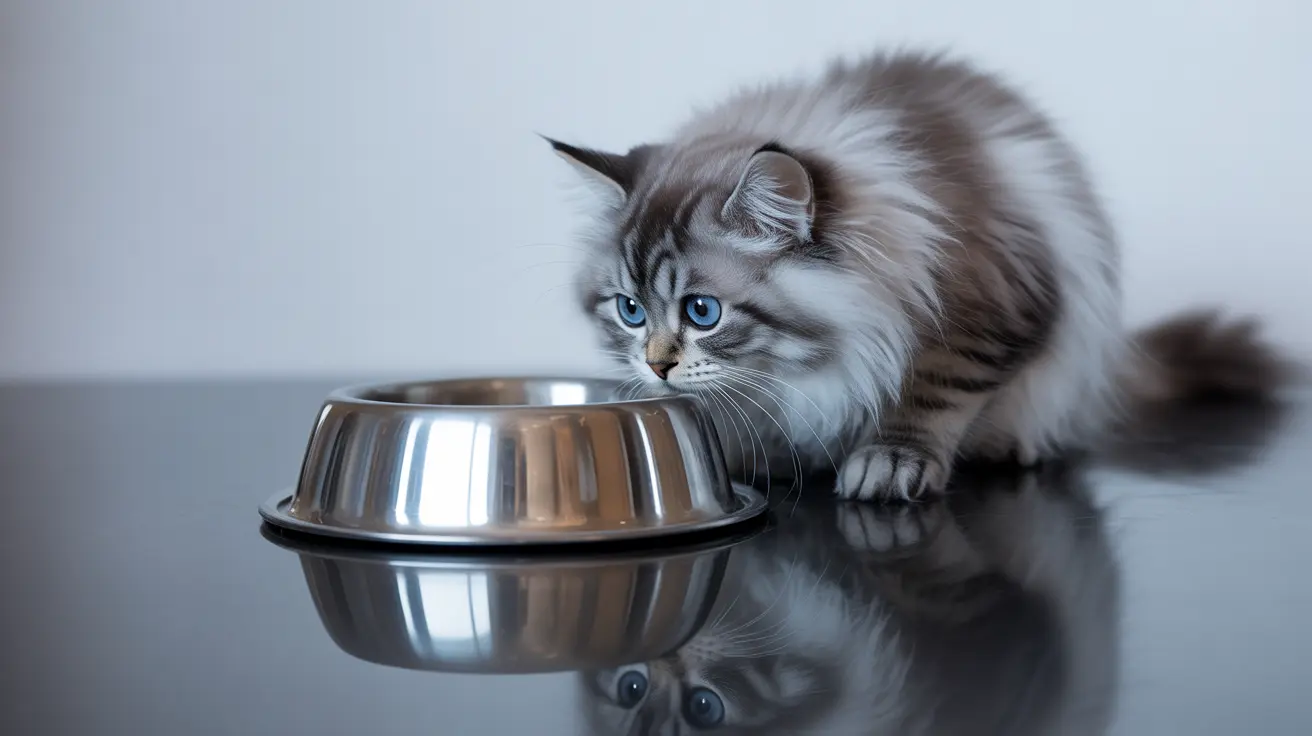If you've noticed your cat developing mysterious skin issues or chin acne, your pet's plastic food bowl might be the culprit. Cats can indeed develop allergic reactions to plastic, and the implications extend beyond simple skin irritation. Understanding these risks and making informed choices about feeding equipment is crucial for your feline friend's health.
This comprehensive guide explores the relationship between cats and plastic allergies, including how to identify symptoms, understand the underlying risks, and choose safer alternatives for your pet's feeding routine.
Understanding Plastic Allergies in Cats
Cats can develop genuine allergic reactions to plastic materials, particularly in areas that frequently come into contact with plastic surfaces. These allergies typically manifest through skin reactions and can range from mild to severe.
Common symptoms of plastic allergies in cats include:
- Redness and inflammation around the chin and neck
- Persistent itching and scratching
- Skin lesions or ulcerations
- Hair loss in affected areas
- Swelling of the face or paws
- In severe cases, respiratory difficulties
The Connection Between Plastic Bowls and Feline Chin Acne
Feline chin acne is one of the most common conditions associated with plastic food and water bowls. This condition occurs when bacteria accumulate in the microscopic scratches present in plastic surfaces, leading to inflammation and infection.
Signs of feline chin acne include:
- Black or white spots resembling human acne
- Swollen or tender chin area
- Scabs or crusty lesions
- Visible discomfort while eating or drinking
Hidden Dangers: Bacterial Growth and Chemical Leaching
Plastic bowls pose two significant health risks beyond allergic reactions. First, their porous nature creates an ideal environment for bacterial growth, even with regular cleaning. Second, many plastics contain harmful chemicals like BPA and phthalates that can leach into your cat's food and water.
These risks increase when plastic bowls are:
- Exposed to heat or sunlight
- Cleaned in dishwashers
- Scratched or damaged
- Used for extended periods
Safe Alternatives to Plastic Bowls
To protect your cat's health, consider switching to these safer alternatives:
Stainless Steel Bowls
- Naturally antimicrobial
- Extremely durable
- Easy to clean thoroughly
- Won't leach chemicals
Ceramic Bowls
- Aesthetically pleasing
- Non-porous surface
- Heavy and stable
- Choose lead-free, food-safe options
Glass Bowls
- Completely inert material
- Easy to sanitize
- Transparent for visible cleanliness
- Durable when properly handled
Prevention and Management Tips
To protect your cat from plastic-related health issues:
- Replace all plastic food and water bowls with safer alternatives
- Clean feeding bowls daily with hot, soapy water
- Inspect bowls regularly for damage or wear
- Monitor your cat for any signs of skin irritation
- Consult your veterinarian if symptoms persist
Frequently Asked Questions
Can cats really be allergic to plastic, and what are the symptoms?
Yes, cats can develop allergic reactions to plastic materials. Symptoms include skin inflammation, redness, itching, and swelling, particularly around areas that come into contact with plastic surfaces, such as the chin and neck area.
How can I tell if my cat is having a reaction to its plastic food or water bowl?
Look for signs such as chin acne, redness around the feeding area, excessive scratching, or hair loss. If these symptoms improve when switching to non-plastic bowls, it may indicate a plastic sensitivity.
What are the best alternatives to plastic bowls for cats with allergies or skin problems?
Stainless steel, ceramic, and glass bowls are excellent alternatives. Stainless steel is particularly recommended for its durability and antimicrobial properties.
How do plastic bowls contribute to feline chin acne and other skin conditions?
Plastic bowls develop microscopic scratches that harbor bacteria and can trigger allergic reactions. These scratches make thorough cleaning impossible, leading to bacterial growth that can cause or worsen skin conditions.
Are there any proven health risks from using plastic bowls for cats, such as chemical leaching or bacterial contamination?
Yes, plastic bowls can leach harmful chemicals like BPA and phthalates into food and water. They also harbor bacteria in microscopic scratches, potentially leading to various health issues including skin problems and infections.
Making the switch from plastic bowls to safer alternatives is a simple yet effective way to protect your cat's health. By choosing appropriate feeding equipment and maintaining good hygiene practices, you can help prevent allergic reactions and other health issues associated with plastic use.






